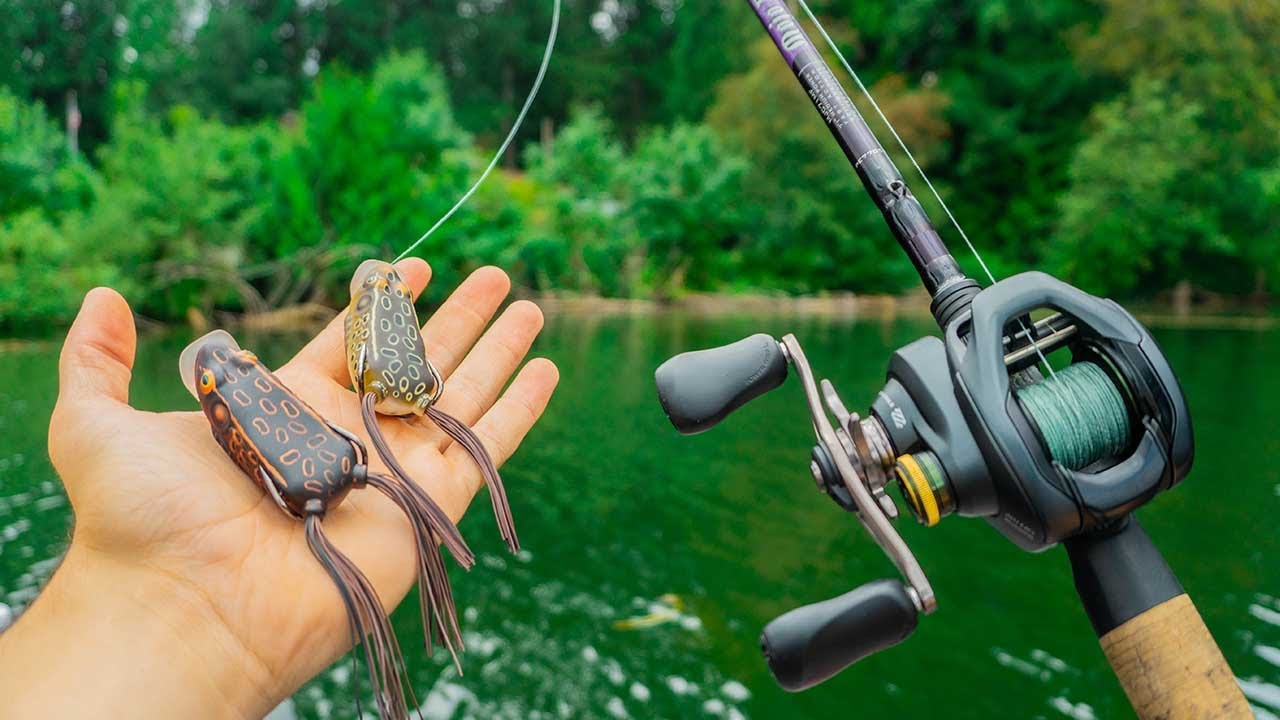Contents
Popular Frog Lures Have Long History
Today’s fishing frogs combine the best features of the past with attractive enhancements.
Frog lures are popular for topwater fishing and for collecting. Fred Roumbanis won the 11-event Bassmaster Elite Series with a custom-colored weedless frog. The 2008 Bassmaster Elite Series, one of the most prestigious fishing tournaments in the United States, came to a close July 28, on New York’s Oneida Lake, when Fred Roumbanis won with a rubber frog lure.
Earliest Frog Lures
While anglers probably have carved and tied frog-like lures since humans began fishing, frog lures for retail distribution in the United States date back to 1902 when the Shakespeare Company offered a rubber frog for casting. In 1905 the company sold another version, which was equipped with a spinning metal prop. This variety was reintroduced in 1909 as the Shakespeare Weedless Frog # 4.
Jay B. Rhodes
The early 1900s also saw the invention of the Rhodes Mechanical Frog. Jay B. Rhodes, a pro inventor who received more than 200 patents, sold his frog lure patent to Shakespeare in 1905. Rhode’s rubber frog was designed with legs that kicked when the lure was retrieved.
Al Foss
Al Foss of Cleveland, Ohio, filed for a patent for his Frog Wiggler on August 4, 1926. The patent for this frog-shaped metal lure was granted on April 16, 1929. The Frog Wiggler came in two sizes, a ¾ oz. No. 11 and a ½ oz. No. 12. Designed to be fished with strips of pork rind attached, the lure came in a tin box. Both lure and box are highly prized by collectors.
Jim Heddon
Jim Heddon began carving wooden fishing lures in Michigan in the late 1800s. By 1902, Heddon had been granted a patent for his Dowagiac Perfect-Surface Casting Bait. His carved wooden frogs, however, were asymmetrical and unsuitable for mass production. It was not until 1927 that Heddon introduced the Luny Frog, which was made of a celluloid material called pyralin. These lures were made in both open-leg and closed-leg models, and the closed-leg variety is the rarer collectible.
Harry Ehlers and The Snag Proof Frog
In the 1950s, Harry Ehlers was an employee of the Totes company. His work there, making rain boots, gave him the idea for an improved plastic frog lure. Before developments in plastics during WWII, rubber and plastic lures were stiff and hard. The new plastics were supple and durable. Ehler’s frog was soft-bodied and hollow, with a weedless hook on the underside and a design that made it tip up when at rest so that the line attachment was less inclined to snag in weeds. The Snag Proof company i continues to make the original frog lure along with other models.
Arbogast’s 1990’s Frog
In the 1990s Arbogast manufactured a lure called “Fred’s Frog.” With its wooden body, glass eyes, and pork rind legs, it incorporated features from a variety of early lures.
Today’s Frog Lures
Dozens of frog lures are available from today’s fishing outfitters. Some are soft-bodied, with legs that kick or skirts that flutter. Others are hard-bodied with frog shapes and realistic paint jobs. Many, such as Scum Frog Big Foot Floats, are weedless. Others, including Cabela’s Fisherman Series June Frog, are equipped with a pair of treble hooks. Frog-patterned poppers and foam frogs are available for fly fishing.
Fishermen Love Frog Lures
Fishermen swear by frog lures for taking large bass from weedy coves. Heavy-duty frog rods are designed just for pulling lunkers out of vegetation. From the earliest hand-carved and rubber models to today’s lifelike frog imitators, frog lures have maintained popularity with anglers because they consistently catch fish.
Books on History of Fishing Lures and Collectibles
Heston, Scott. Ohio Made Fishing Lures and Tackle. 2005
Irwin, R. Stephen MD. Sporting Collectibles. New Jersey: Stoeger Publishing Company, 1997

